
|
|
Patrons |
Diamond  Gold  |
Related Events |
|
CCNC 2010 TUTORIALS Tuesday, January 12 T1: SIP and RIA The SIP Tutorial includes an introduction to SIP and its associated protocols such as RTP (Real-time Transport Protocol) and SDP (Session Description Protocol). Both client-client server and peer-to-peer SIP systems are discussed. Various issues of working over the Internet, especially NAT (Network Address Translation) traversal are presented as well as SIP-specific solutions such as the STUN/TURN and ICE protocols. SIP security issues are is also presented. Examples of various SIP based communication applications are provided, in the areas of telephony, presence, instant messaging and multimedia. The dominant VoIP (Voice over IP) standard protocol, SIP has initially been modeled after HTTP (Hyper Text Transport Protocol), but since then these two application protocols have developed quite differently: SIP has been embraced by the telecom industry while the Rich Internet Applications (RIA) on the web are a transformative driver for many industries. The tutorial discusses the potential of combining SIP with RIA in an homogenous manner, that includes applying web architectural principles to certain SIP systems. Dr. Alan Johnston T2: IPTV and the Future of Video Services Service providers have been recently investing heavily in IP technologies with the goal of providing reliable, high-quality digital TV content to their subscribers with rich personalization features. This new form of television, called IPTV, leverages many existing networking architectures and protocol specifications, but also led the way to develop new ones to address its specific requirements. In this tutorial, we provide a detailed overview of IPTV and its building blocks, explain the architectures and protocols used to carry video over IP in core, aggregation, access and home networks along with the current standardization efforts, and present observations and experiences from real deployments. The tutorial also touches on several concepts related to IPTV, including over-the-top services, Internet/Web TV, the TV Everywhere model and targeted advertising. Ali holds a Ph.D. degree in electrical and computer engineering from Georgia Tech. He received the Best Student-paper Award at IEEE ICIP 2003, and the Most-cited Paper Award from Elsevier Signal Processing: Image Communication in 2008. He is also a member of the IEEE and ACM. T3: 4G - Next Generation Mobile Applications Emerging mobile platforms Today, mobile handset processing power and functionality parallels that of laptop/desktop computers. Despite its limitations (battery life, screen size, and input), the mobile device is emerging as a major computing platform that fuels a major category of software applications. In this section of the tutorial, we will survey the existing fragmented state of the mobile platform space and discuss the key advantages and disadvantages of existing platforms. Mobile 2.0 - Web 2.0 on mobile devices Mobile 2.0 refers to the next generation of mobile broadband services that extend the social aspects of Web 2.0 (collaboration and sharing among users) to the mobile world. Today’s mobile device characteristics and capabilities take the social Web aspects of Web 2.0 to the next level by enabling personal, always-on, and location-aware services. In this section of the tutorial, we will discuss the unique opportunities and challenges associated with Mobile 2.0 applications. The mobile “cloud” While many mobile applications are stand-alone and do not require any communications beyond that of the device itself, the more interesting class of mobile applications involves communications with services residing in the cloud. While most of these services are existing Web-based services (e.g., Google search, Yahoo local, Twitter, etc), several advanced and personalized services require a new class of “cloud” services. In this section of the tutorial, we will survey several of these mobile cloud services. Location information as an enabler Location plays an important role in our daily lives due to its unique ability to connect our surrounding physical world with digital information and content available for this physical world. Mobile devices are poised to become the primary delivery medium for a new generation of location-aware services. In this section of the tutorial, we will review positioning technologies for mobile devices and discuss their main strengths and weaknesses. Location-aware services Location-aware services are gaining a prominent role due to their game-changing potential. However, wide-spread acceptance of these services faces many technical, business, and psychological barriers. On the technical side, understanding the context in which mobile handsets are being used, the strengths and unique challenges of mobile handsets, and providing a simple and intuitive user interface are key factors in successful user adoption. On the business side, developing strategies for enabling advertisers and content/information providers and making the service available to a wide audience is required for profitable services. On the psychological side, enforcing strict security and data lifecycle management will ease user worries associated with the privacy of the information collected and shared by location-aware services. In this section of the tutorial, we will address the above challenges to some depth. Mobile social networking In this section of the tutorial, we will discuss social networking in the context of mobility. In particular, we will discuss some of the emerging mobile virtual worlds, mobile augmented reality, and life streaming applications. Personal navigation applications Today, personal navigation devices (PNDs) go beyond driving direction from point A to point B. For instance, they offer: Bluetooth connectivity with cellular phones for hands-free calling and accessing back-end services, built-on MP3 players, speech recognition and text-to-speech, a large database of Points of Interest, and access to online content and information in real-time (such as gas prices, movie listings, etc.). In addition, PNDs have started embracing user context and linking with popular social network sites. In this section of the tutorial, we will discuss current trends in the space of PNDs and address the emerging class of personal navigation applications running on mobile handsets. mHealth Applications accessible through mobile devices, such as mobile phones, are playing an increasingly important part in the delivery of high quality and personalized healthcare services. Several efforts are under way to transform smartphones into computational and medical imaging devices. In this section of the tutorial, we will examine current usage of mobile devices and networks by mobile healthcare applications, and discuss how mobile devices and networks could be used for creating patient-centered healthcare applications. Instructors: Shoshana Loeb, Ph.D.  Bio: Shoshana Loeb, Ph.D., is an executive, a leader, a researcher, an inventor and an entrepreneur with a proven track record in creating disruptive technologies, operating and growing innovative technology organizations and businesses. Currently, she is a Chief Scientist and an Executive Director at Telcordia Technologies in Piscataway, NJ where she leads efforts focused on the creation of new market-driven products and services for next generation mobile services that both improve quality of life and have application to connected healthcare services. She is also involved in the commercialization through a variety of business model of technologies and intellectual property developed by the corporation through its long legacy from Bell Labs after the AT&T divestiture in the early eighties. In 2004-2005 Dr. Loeb was an Executive in Residence with Murex Investments, an early stage venture capital firm. In 1999, Dr. Loeb founded Elity Systems and transitioned the company from an early stage company to a focused thriving business. She raised $17M in two over-subscribed rounds of financing. As a CEO, she weathered Elity through the dot-com burst and transformed Elity to a recognized world-class leader in its market space with sustainable financial results. The company was purchased by MarketSoft in 2004, which was subsequently purchased by Unica (UNCA). Elity’s products remain leaders in their market space. Previously, Dr. Loeb served as the Executive Director of the Internet/Information Technology business unit at Bellcore (formerly Bell Laboratories, now Telcordia Technologies). Her organization invested in, developed and deployed innovative technologies in all areas of next generation telecommunication networks. Dr. Loeb holds a B.Sc. in Physical Chemistry from the Hebrew University, Jerusalem, Israel, a M.Sc. in Chemical Physics, and an award-winning Ph.D. in Applied Mathematics from The Weizmann Institute of Science in Rehovot, Israel. She held a Post-Doctoral Fellowship in Computer Science and Artificial Intelligence at Yale University and was a Computer Science Professor at SUNY-Buffalo. She holds three granted US patents and over seven pending patents, authored over seventy professional publications and appeared in media and industry events including in the NPR series on distinguished women in Science and Technology. She is recently working with the University of Delaware on developing a technology entrepreneurship curriculum for Electrical Engineering and Computer Science students and has a taught a class as part of the program in fall 2008. She is a member of the Investment Advisory Committees of the NJ Economic Development Authority (Edison Innovation Fund) and the Ben Franklin Technology Partners.ه Euthimios (Thimios) Panagos, Ph.D. Dr. Panagos is a Chief Scientist in the Software Technology Research department of Telcordia Technologies. Dr. Panagos has over 15 years of experience in technology research and development with expertise in the areas of data management, large-scale distributed systems, event notification middleware, workflow management, and mobile technologies. Prior to joining Telcordia, Dr. Panagos spent four years in a technology start-up company where he was responsible for establishing and directing the strategic long-term goals, policies, and procedures for all company services and products. Prior to his start-up engagement, Dr. Panagos spent four years at AT&T Labs, as a senior member of the technical staff, and three year at AT&T Bell Labs. Dr. Panagos received his M.S. and Ph.D. degrees in Computer Science from Boston University, in 1993 and 1996, respectively. He is a member of the ACM and has published over 25 papers in highly competitive international conferences and journals. He is a co- inventor of 15 patents, 8 of which have already been issued. He has served as a panelist and program committee member for numerous conferences, and as a reviewer for conferences and journals. In addition, Dr. Panagos has co-authored with Shoshana Loeb and Benjamin Falchuk the book: "The Fabric of Mobile Services: Software Paradigms and business demands", John Wiley and Sons, June 29, 2009. T4:هههContent Delivery Networks This tutorial will provide a broad overview of Content Delivery Networks: the services they provide, their architectures, their operation, and their place in the Web infrastructure business.ه Using Akamai Technologies as a case study, the tutorial will explain methods for delivering static content, streaming content (live and canned), and dynamically generated content.ه It will discuss the algorithms used for load balancing, optimizing client performance, and minimizing expenditures on network bandwidth.ه Statistics from several of the largest Web events will be described.ه The talk will also discuss security issues, such as how to mitigate denial of service attacks. Finally, the tutorial will describe several new research areas, such as providing database scalability services and techniques that content delivery networks or large content providers can use to miminize energy costs. Instructor: Bruce Maggs, Ph.D. Bio: Bruce Maggs received the S.B., S.M., and Ph.D. degrees in computer science from the Massachusetts Institute of Technology in 1985, 1986, and 1989, respectively. His advisor was Charles Leiserson. After spending one year as a Postdoctoral Associate at MIT, he worked as a Research Scientist at NEC Research Institute in Princeton from 1990 to 1993. In 1994, he moved to Carnegie Mellon, where he stayed until joining Duke University in 2009 as a Professor in the Department of Computer Science. While on a two-year leave-of-absence from Carnegie Mellon, Maggs helped to launch Akamai Technologies, serving as its Vice President for Research and Development, before returning to Carnegie Mellon. He retains a part-time role at Akamai as Vice President for Research. Maggs's research focuses on networks for parallel and distributed computing systems. In 1986, he became the first winner (with Charles Leiserson) of the Daniel L. Slotnick Award for Most Original Paper at the International Conference on Parallel Processing, and in 1994 he received an NSF National Young Investigator Award. He was co-chair of the 1993-1994 DIMACS Special Year on Massively Parallel Computation and has served on the steering committees for the ACM Symposium on Parallel Algorithms and Architectures (SPAA) and ACM Internet Measurement Conference (IMC), and on the program committees of numerous ACM conferences including STOC, SODA, PODC, and SIGCOMM. T5:ه Peer-to-Peer Networking for Consumer Electronics Peer-to-peer overlay networks are an important new platform for designing distributed applications, and are synergistic with trends in consumer electronics, such as broadband wireless interfaces, increased CPU and memory capacity. P2P has a sizable and rapidly growing body of research. This tutorial surveys the key results and main trends in overlay networks, introduces terminology, and explains the organization of the research literature.ه We also summarize existing research in P2P in a number of key areas related to consumer electronics, and discuss open issues and research directions.ه The expected outline of the tutorial is: Introduction and motivation; Example applications; P2P overlay networks; Search; Mobile P2P; Multimedia content delivery; Service overlay networks; P2P for Consumer Electronics; Research Directions. Instructors: Dr. John Buford  Dr. John Buford is a Research Scientist with Avaya Labs Research. He is co-author of the book P2P Networking and Applications (Morgan Kaufman, 2008), co-editor of the Handbook of Peer-to-Peer Networking (Springer-Verlag, forthcoming) and has published 120 refereed publications.ه He was TPC Chair of IEEE CCNC 2009; Vice-Chair P2P Track of IEEE CCNC 2008; TPC Co-Chair of IEEE Globecom 2007 – P2P track in General Symposium; TPC co-chair IMSAA09, TPC co-chair IEEE Globecom 2010 CSSMA Symposium; co-TPC chair for Mobile P2P 2006-2008; and TPC member for IEEE P2P Computing Conference. He is a member of the editorial board of the J. of Peer-to-Peer Networking and Applications, and a reviewer for Computer Communications, IEEE TOM, IEEE TON, and IEEE Communications Magazine. He is an IEEE Senior Member and is co-chair of the IRTF Scalable Adaptive Multicast Research Group.ف He holds the PhD from Graz University of Technology, Austria, and MS and BS degrees from MIT. Dr. Eng Keong Lua 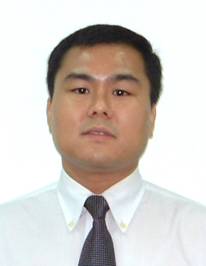 Dr. Eng Keong Lua obtained his Ph.D. degree in Computer Science from the University of Cambridge, United Kingdom, M.Sc. degree in Telecommunications with Distinction from University College London (UCL), UK, and both the Postgraduate Diploma of Teaching in Higher Education and B.A.Sc degree in Computer Engineering with Merit from Singapore. At Cambridge, he received Microsoft Research fellowship and UK EPSRC e-Science research scholarship, and he completed a 6-month research internship at the Intel Research. He was awarded the University of Cambridge Fitzwilliam College Senior Scholar prizes from 2003 to 2005. He was also the inaugural recipient of prestigious 2003 Australia-Asia awards, presented by the Australian government to promising Asia research scholar for research activities in Australia.ف Since 1993, he had several years of academic experience in Singapore and worked in the international research and consulting industry for many years – R&D/Consulting Manager on international assignments at the Hewlett-Packard R&D/Consulting, Assistant Director of Singapore government telecommunications policy and regulatory agency, and Senior Research Scientist in the NTT Laboratories at Tokyo, Japan. His research areas include Peer-to-Peer (P2P) networks; Internet-scale P2P overlay architecture for multimedia content communications and online gaming; network security with social networking; and future Internet mobility.ف He is co-author of the book P2P Networking and Applications (Morgan Kaufman, 2008). T6: Towards Glitch-Free VoIP and Video Conferencing Worldwide VoIP (voice over Internet protocol) service revenue was 24.1 billion USD in 2007, surged 52% over 2006. Both residential and business VoIP services experienced strong growth, with particularly stronger growth at the residential side, with revenue up 56%, and subscribers up 60%. It is predicted that VoIP service revenue would double over the next 4 years, reaching 61.3 billion USD in 2011, yielding an annual growth rate of 26%. A key obstacle for VoIP to completely substitute PSTN (public switch telephone network) is VoIP’s current capability to provide quality and reliable service compared to PSTN. While the VoIP customers are cheering for its flexibility and efficiency, they are dismayed by its quality and reliability. Since VoIP call does not traverse a dedicated network like a PSTN or a cell phone network, the QoS (quality of service) of VoIP call depends on the capability of the application in managing the packet jitter, packet loss and addressing the possibility of unreliable bandwidth on the path. It is perceived that the QoS of VoIP is not only inferior to that of PSTN, but also to that of cell phone network. In this tutorial, we take a close look at the VoIP and video conferencing system, from the system component, the audio/video component and to the network component. Through the tutorial, we hope that the students will gain a broad knowledge of the inner works of the state-of-the-art VoIP and video conferencing system. Moreover, the students will also learn various technologies in both codec and networking area that can be used to design a VoIP and video conferencing system with superior quality of service.ه Instructor: Dr. Li has 90+ referred conference and journal papers in a diversified research field, with interests cover audio/image/video compression, virtual environment and graphic compression, audio/video streaming, and VoIP and video conferencing. His research group (Communication System) supports Microsoft real-time communication (RTC) group, which develops the audio/video engine for Microsoft Unified Communication systems. He will be the general chair for 17th International Packet Video workshop 2009, to be held in Seattle, WA. He holds 20+ issued US patents, with many more pending. Dr. Li is an Area Editor for the Journal of Visual Communication and Image Representation (Academic Press), an associate editor of P2P networking and applications and an associate editor of Journal of Communications. He was an associate editor of IEEE Transactions on Multimedia. He is a senior member of IEEE. He was the recipient of the 1994 Ph.D. thesis award from Tsinghua University, the 1998 Young Investigator Award from SPIE Visual Communication and Image Processing, and the Best Paper Award from 2009 IEEE International Conference of Multimedia. T7:ه Delay and Disruption Tolerant Networking Delay and Disruption Tolerant Networkingه(DTN) is one of the research areas within mobile networking that have grown the fastest over the past few years. A lot of work have been done and published about DTNs, and DTN research has become gone from a small nich\'{e} area to a hot topic in many major conferences, including Mobicom, Mobihoc, Sigcomm, and Infocom. Work in this area address networking in environments where some of the implied assumptions of traditional network protocols cannot be met. These characteristics of the networks can include very long propagation delays and frequent disruptions in network links (meaning that there may never even exist a fully connected end-to-end path).ه Frequently, node mobility must be used to move messages through the network, with opportunistic communication contacts eventually allowing messages to be delivered to their destination. Work in this area was initially begun to support interplanetary networking, but soon many terrestrial scenarios with similar characteristics were discovered. Such scenarios include communication in remote and rural areas and developing countries, vehicular communication, and sensor networks. The very long delays and the lack of end-to-end connectivity means that traditional protocols that require frequent end-to-end interaction become unfeasible and thus there is a need for new communication architecture and application paradigms. Sessions should be bundled and send in single messages whenever possible, and applications must be designed such that they do not leave the user waiting indefinitely for an answer that may take a long time to be delivered. In this tutorial we will give a background and motivation to the research area and show what the differences from traditional networks are. We will then provide an outline of the research that has been done in the area up to this point in different aspects of the system, as well as provide some case studies of real systems. Finally, future challenges for research in this area will be provided.ه We believe both practical implementation knowledge and deep understanding of the topics are important to give a tutorial. and both instructors have experience in both aspects, and thus, our tutorial would be highly beneficial to participants. Instructors: Dr. Anders Lindgren is currently a senior researcher at the Swedish Institute for Computer Science (SICS). He received his Ph.D. from Lule University of Technology in 2006, and worked at University College London and the Universtity of Cambridge from 2007-2008. Dr. Lindgren is one of the pioneers within DTN research and has been active in the research field from an early stage of this new research field. He was one of the principal persons responsible for designing the SNC DTN system that has successfully been deployed multiple times in the Swedish mountains, and his PRoPHET routing protocol was one of the first routing protocols for intermittently connected networks. Anders has been involved in the work of the IRTF DTN research group and is the co-founder of the ExtremeCom workshop. Pan Hui, Ph.D. Bio: The ExtremeCom 2009 workshop was jointly organized by Dr. Lindgren and Dr. Hui and was the first of its kind in bringing the researchers into the environment for which they are designing the delay tolerant systems. The workshop was arranged in a remote area of the Swedish mountain and included 4 days of hiking as well as paper presentations and technical discussions. Participants could experience the target environment for a DTN system and meet and discuss with intended end users. The workshop was very successful and all participants found the attendance highly rewarding. T8:㺹㺹㺹 Wireless Broadband Networks Technologies Wireless access network standards are diverse as each is optimized for different category of usage, whereas their core network provides opportunity for convergence. The major wireless network standards include those in the 3GPP (3rd Generation Partnership Project) family, 3GPP2 family, and the wireless networks under IEEE 802 family. The number of mobile subscriptions worldwide continues to grow and had reached 4 billion, out of which about 85% are GSM. The 3GPP family takes advantage of the dominance of GSM phone and provides evolution path for cellular phones while also providing access to other wireless networks. It evolves GSM in 2G Wireless to Beyond 3G, and to 4G. The radio access network had evolved to UTRA and WCDMA in 3G Wireless, to HSPA and HSPA+ in Beyond 3G Wireless, and then to Long Term Evolution (LTE). The core network had evolved to UMTS network and then to Evolved Packet Core (EPC) as it moves to all-IP network supporting different access networks with many different services and yet to reduce complexity with fatter network. The 3GPP2 also has an evolution path, but EPC core network is providing access to 3GPP2 access networks, EPC will become the convergent core network for both 3GPP and 3GPP2. With the convergence of wireless networks, wired networks, and broadcast networks, the wireless networks are evolving fast towards 4G wireless and beyond. ITU has defined the requirements in IMT-Advanced to provide the standard for 4G Wireless. The 3GPP system of EPC, LTE+ and Femtocell is expected to be a strong player in 4G Wireless. The tutorial overviews the key concepts and understanding of the architecture, requirements, challenges, future trends, and the key issues affecting operator decisions. Instructors:
Dr. Justin Xiang is currently with Huawei Technologies Co., Ltd. as the Director of Future Technologies and Solutions. In this position, he is in charge of research and long term technology planning in the areas of future packet switch based and converged core networks. Prior to joining Huawei, he was the Director of Core Network Strategy at Motorola, in charge of technology, research, standards and product strategies. From 1995 to 2000, he was with Ericsson Research as a Senior Network Specialist and Principal System Architect. Prior to that, he also held multiple teaching and senior research positions with University of Texas, INRS-Telecom and Concordia University. He is a Senior Member of IEEE. His interested areas include: next generation converged core network architecture, IP multimedia subsystems and services, policy control and management, network intelligence, network security, etc. He received his Bachelor's, Master's and Ph.D. degrees all in telecommunications. |
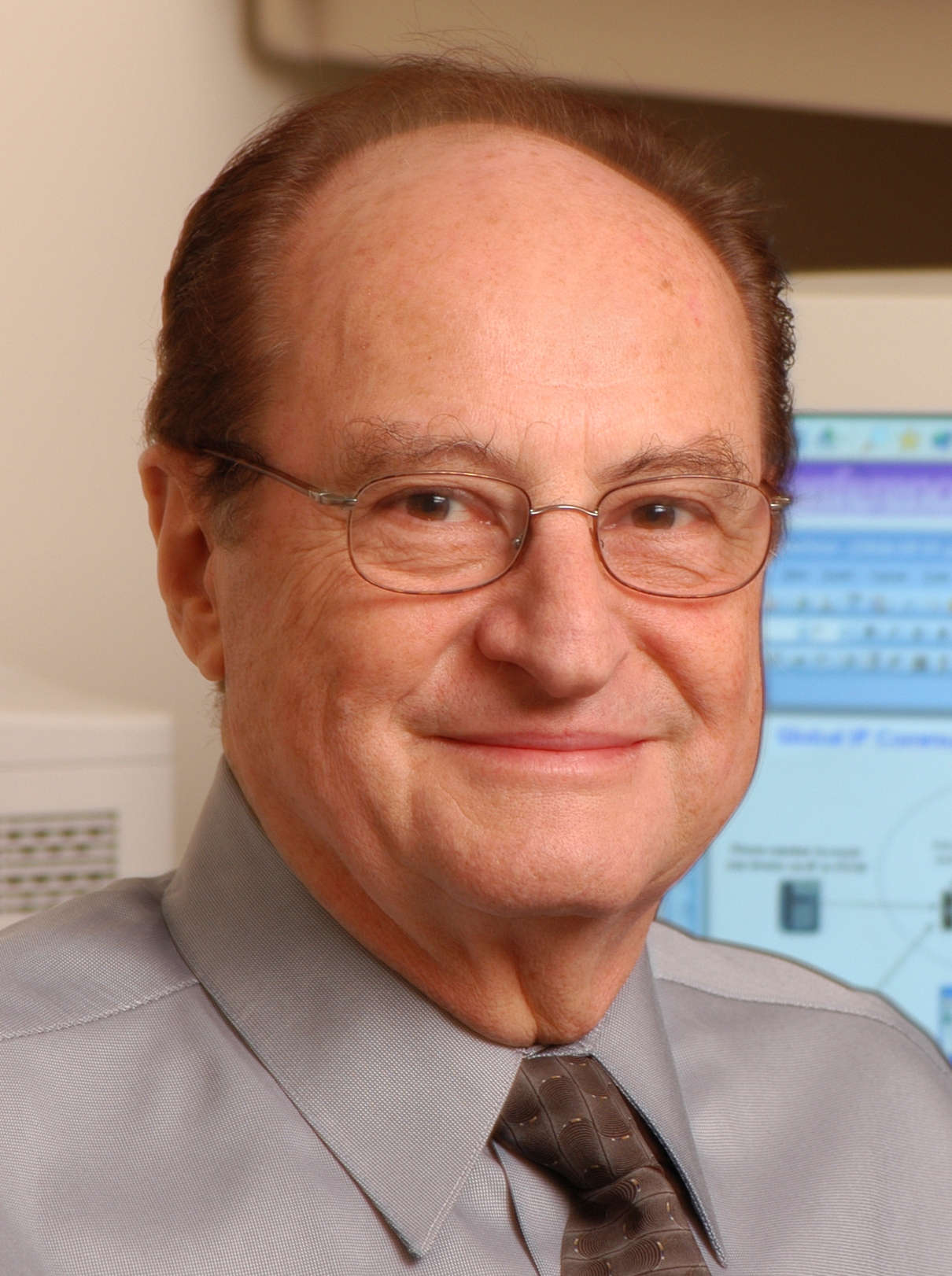
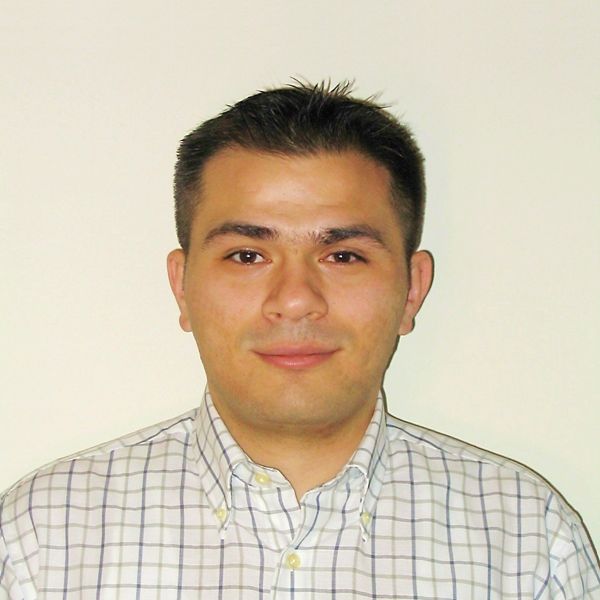

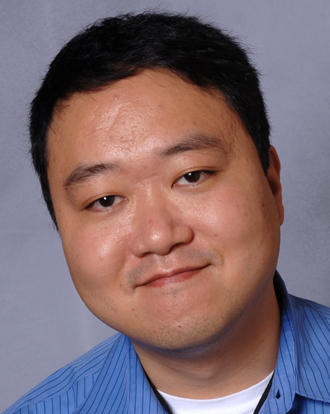

 㺹
㺹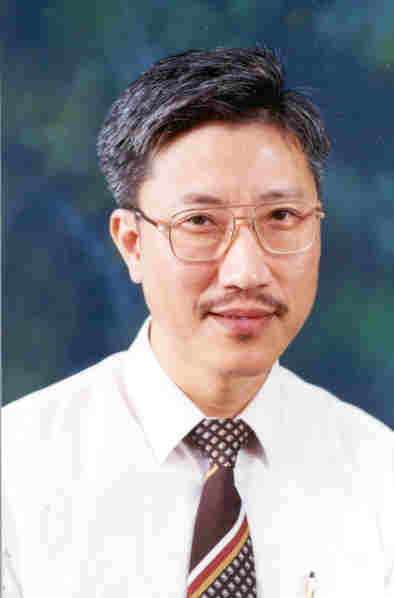
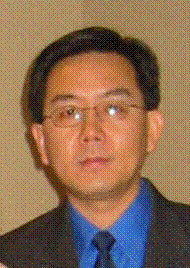 㺹
㺹